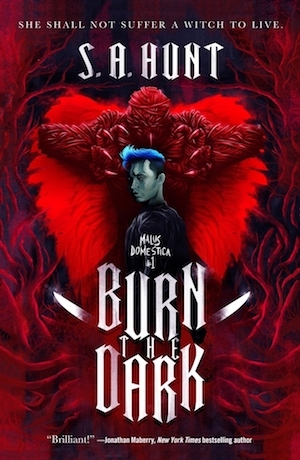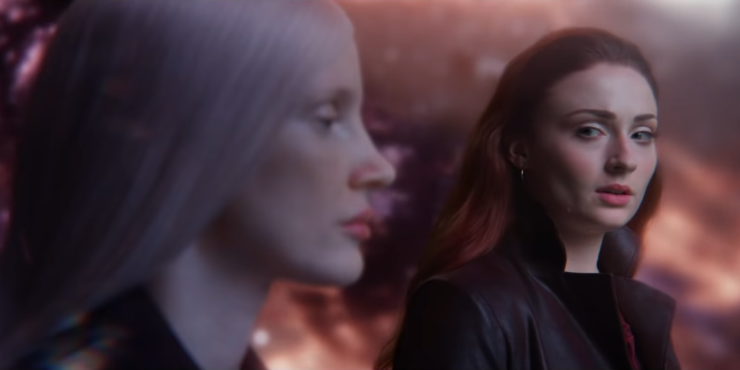One of the most popular stories in comics history, the extended storyline that cemented the X-Men’s place in the late 1970s and early 1980s as Marvel’s new flagship title, was the “Dark Phoenix” saga, which culminated in the death of Phoenix in 1980’s Uncanny X-Men #137. Co-plotted by scripter Chris Claremont and artist John Byrne, the story saw founding member Jean Grey become corrupted by her power, thanks to mental manipulation by the longtime X-villain Mastermind.
This storyline has been adapted several times in screen versions of the X-Men, including once before in the Fox live-action series. The cowriter of that film, Simon Kinberg, took advantage of the time-travel shenanigans of Days of Future Past to take a mulligan on The Last Stand and do it all over again, this time as both writer and director.
The “Dark Phoenix” saga got its start, truly, in the aftermath of the X-Men’s battle against Magneto in his Antarctic base in Uncanny X-Men #112-113 in 1978. In the wake of that battle, the X-Men were separated, each group thinking the other dead. Jean Grey, a.k.a. Phoenix, and Hank McCoy, a.k.a. the Beast, returned to the X-Men’s mansion, sadly informing Professor Charles Xavier that the X-Men were dead. Grey eventually wound up on Muir Isle in Scotland, where she met a man named Jason Wyngarde. She also started having very vivid flashbacks to a life in 18th-century America as a member of the Hellfire Club.
(The rest of the team went to the Savage Land, a prehistoric realm hidden in Antarctica, then sailed into nasty waters and were rescued by a Japanese military ship on radio silence, and then their plane ride home from Japan got diverted to Canada, before finally going home to find the mansion locked up. Apropos of nothing, this is a story that could only work in an age before cell phones…)
Wyngarde turned out to be one of the X-Men’s oldest foes, Mastermind, an illusionist, who was trying to join the modern-day version of the Hellfire Club, a group of mutants dedicated to financial and political power. His “application” was to suborn Phoenix to their ranks, making her think that she was truly in the 1700s and part of that older club. While Phoenix was able to break Mastermind’s hold, the damage was done, and she gave in completely to her power and became Dark Phoenix.
Buy the Book


Burn the Dark
She destroyed a star, wiping out an entire solar system (one of which had an inhabited planet, D’Bari), and also destroyed a Shi’ar cruiser. After returning to Earth, she fought a psi-war with Xavier, and between Xavier’s own strength, as well as Grey herself fighting against her baser nature, the Professor was able to put psychic barriers on her to limit her powers.
But then the Shi’ar came and sentenced her to death for destroying D’Bari and the ship. The X-Men fought the Shi’ar Imperial Guard and lost—but when she sees Cyclops cut down, Grey loses it, and becomes Phoenix again, finally committing suicide rather than become Dark Phoenix again.
This, by the way, was not the planned ending, as Claremont and Byrne had intended to have Grey instead basically lobotomized, her powers completely removed, making her a normal human. Marvel’s editor-in-chief Jim Shooter insisted that she needed to pay a harsher penalty for wiping out a solar system, and so the character was killed.
Six years later, Marvel created X-Factor. I outlined in the rewatch of Apocalypse exactly why the creation of X-Factor was wrong on so many levels, in part because it did bring Jean Grey back, and absolved of Dark Phoenix’s crimes by making the character of “Phoenix” that we saw in Uncanny X-Men #101-137 an alien entity that took on Jean’s form and memories and personality, with the original Grey in a cocoon in the Atlantic Ocean.
Just as X2 set up the notion of Grey becoming Phoenix in The Last Stand, Apocalypse did likewise for Dark Phoenix. Following the pattern of all the “past” X-movies since 2011’s First Class, this movie again jumped a decade, taking place in 1992 (the year that the X-Men animated series debuted on the FOX network), with an opening flashback to 1975 (the year that the “new X-Men” debuted in Giant-Sized X-Men #1).
Back from Apocalypse are James MacAvoy as Xavier, Michael Fassbender as Magneto, Jennifer Lawrence as Mystique, Sophie Turner as Grey, Tye Sheridan as Cyclops, Nicholas Hoult as the Beast, Alexandra Shipp as Storm, Kodi Smit-McPhee as Nightcrawler, and Evan Peters as Quicksilver.
Kinberg originally had the bad-guy aliens be the shape-changing Skrulls rather than the Shi’ar as they were in the comic. Possibly due to rights issues (the Skrulls appeared in a Marvel Studios movie—one released the same year and also taking place in the 1990s, Captain Marvel), it was changed during post-production and reshoots to the D’Bari, altered from victims to antagonists. Jessica Chastain plays Vuk, their leader, with Ato Essandoh as her second.
Also in the film are two allies of Magneto, Selene Gallio (very loosely based on the ancient sorceress from the comics), played by Kota Eberhardt, and Ariki, played by Andrew Stehlin.
After numerous reshoots and several delays, and after Disney bought 20th Century Fox, the film was finally released in 2019 to lukewarm reviews. It’s likely the swan song of this run of X-films, though The New Mutants is still scheduled for 2020 release. At this point, thanks to the aforementioned purchase, the X-folk are likely to be folded into the Marvel Cinematic Universe moving forward.
“You are not broken”
X-Men: Dark Phoenix
Written and directed by Simon Kinberg
Produced by Simon Kinberg, Hutch Parker, Lauren Shuler-Donner, and Todd Hallowell
Original release date: June 7, 2019

In 1975, eight-year-old Jean Grey is changing the radio station in her parents’ car as they’re driving with her telekinesis without even realizing she’s doing it. She starts hearing the thoughts of her parents and other people on the road. She yells for everyone to be quiet, which has the unintended side effect of putting her mother to sleep. The car careens out of control into a truck. Grey’s parents are killed, but she isn’t hurt at all.
Professor Charles Xavier takes her in. She doesn’t think she deserves to stay in so nice a mansion, as she breaks things, but Xavier promises that if she does, they’ll fix it.
Jump to 1992. In the decade since Apocalypse, the X-Men have become celebrities, complete with a hot-line to the President of the United States. When the space shuttle Endeavour is damaged by what appears to be a solar flare, the X-Men volunteer to save the astronauts—which they do, mostly thanks to Nightcrawler’s teleporting, Quicksilver’s speed, and Grey’s telekinesis. Grey herself is still on the shuttle when the flare strikes, destroying it, though Grey absorbs much of it into herself. Nightcrawler is able to get her back onto the X-jet, and when they land (to a hero’s welcome), she’s surprisingly fine.
Mystique is concerned about how much of the X-Men’s missions are there to aggrandize Xavier. She’s also concerned about the risks they’re taking, as this could just as easily have been a failed mission with Grey dead. Xavier counters that it’s better for them to be hailed as heroes than hunted as freaks. He also reminds her that they’re just one big incident away from being hated again. (That’s probably foreshadowing.)
Xavier goes to D.C. to receive an award, while the kids at the school have a party. At one point during the party (during which Grey is drinking a great deal of liquids, as she’s strangely thirsty), her mental shields collapse and she screams for everyone to be quiet, knocking a lot of things over. Then she herself lapses into unconsciousness.
Sensing this, Xavier cuts the reception short and returns home. Grey has become so powerful that Xavier can’t actually sense her anymore. (This makes absolutely no sense.) He uses Cerebro to amplify his powers, and he’s able to connect to her mind. He senses what she senses, which is so many different minds—including a familiar voice.
Grey leaves the school. Cyclops tries to go with her, but she puts him to sleep so he won’t follow. While Xavier can’t track her, he knows where she’s going: the house where she grew up.
They take the X-jet there, just as Grey confronts her father, who is actually alive. Turns out that her father didn’t want her around anymore, as she was a constant reminder of the death of his wife. He urged Xavier to take her away and tell her that he was dead so he wouldn’t have to see her again.
When the X-Men arrive, Grey fights them, refusing to go back, furious at being lied to all these years. In the fight, local cops are injured, as is Quicksilver, while Grey kills Mystique, casting her aside and impaling her on debris. Devastated at killing her friend, Grey flies away.
Grey goes to Magneto, who lives in a haven for mutants that the government has granted him and any mutant who wishes to take sanctuary there. The U.S. military follows, saying they’re there for Grey, who refuses to go. A fight ensues, and Grey leaves after kicking considerable ass.
The X-Men mourn Mystique. The Beast blames Xavier for killing her, and goes off to Magneto, telling him the one thing Grey left out: that she killed Mystique.
An alien species called the D’Bari kill a bunch of humans and take their forms. They are after the cosmic force that has now possessed Grey, and which was responsible for the solar flare that damaged the Endeavour. They track Grey down and bring her to a mansion in Manhattan.
One of Magneto’s people learn that Grey’s been sighted in New York. Xavier tracks Beast to New York as well, and there’s a fight between the X-Men and Magneto’s people, with Beast now on Magneto’s side.
First Magneto, then Xavier confront Grey. She tosses Magneto aside after destroying his helmet, then Xavier lets her read his mind, and she remembers how much Xavier helped her. Vuk, the leader of the D’Bari, wants the cosmic force so they can rebuild their world, and Grey is willing to give it to her. Too late, the X-Men realize that the D’Bari want to rebuild their world on Earth, killing humanity, and the act of extracting the force will kill Grey. Cyclops, Xavier, and Magneto manage to stop the transfer—but then the U.S. military shows up with a mutant power neutralizing gun and collars that suppress mutant powers. Everyone is captured and put on a train and sent to a containment facility.
Then the D’Bari attack the train and make short work of the troops. The X-Men manage to convince the commander to free them once it’s clear that these aren’t fellow mutants coming to the X-Men’s rescue, but rather nasty-ass shape-changing aliens. The X-Men hold their own against the D’Bari, but Vuk has some of the cosmic force within her now and is much more powerful.
But then Grey frees herself, blowing past the control collar. She makes short work of the D’Bari and flies into orbit with Vuk, never to be seen again.
Xavier renames the school the Jean Grey School for Gifted Youngsters and then takes a leave of absence, leaving the Beast in charge. He goes to Paris, where Magneto tracks him down and challenges him to a game of chess.
“I’m not as evolved as I thought I was”

The biggest problem with adapting the Dark Phoenix storyline in a series of movies is that the effectiveness of the original tale was because Chris Claremont and John Byrne told it slowly as a background subplot for the better part of two years before it kicked into high gear. Also it was effective because it was a character who had, at that point, been a regular in a comic book for seventeen years (on and off).
It’s much harder to make that work when your storytelling space isn’t a monthly comic, but rather a two-hour movie every couple years. There just isn’t time for it to build.
Both times he did it, Simon Kinberg chose to flash back to Jean Grey’s childhood to invent a trauma or an issue that had to be dealt with to artificially foreshadow Grey being immensely powerful. The thing is, there was already such a trauma in the comics that they didn’t use and would’ve been just as effective: Grey was present as a child when her best friend was hit by a car, and she felt her die in her mind. Xavier was called in to help and he put blocks on her telepathy which only came down later.
Having said that, changing Grey’s backstory so that she was indirectly responsible for the car crash that killed her mother and injured her father mostly just serves as an artificial conflict to set Grey against Xavier.
Artificial conflicts are the order of the day in this movie, as the X-Men confront Grey in full uniform ready for a fight when all she’s done is go to her home. It’s an unnecessarily provocative setup that makes no sense when we’re talking about friends going after friends. (Grey hasn’t proven to be that dangerous yet.)
After that, a single incident in the suburbs in which a few people get hurt and one X-Men team member is killed suddenly leads to mutants being vilified again. It’s too quick a change for not a good enough reason. If Grey had killed a bunch of people, or done something more public and brutal, that would be one thing, and even then, it wouldn’t be an instant process where they go from hot-line to the president to mutant containment facilities in a day.
And then there’s the attack in New York, in which Xavier urges Magneto not to have a big-ass fight in a city because that will make things worse, and then both sides not only fight, but have absolutely no regard for civilian casualties. One expects that from Magneto, but the X-Men aren’t any better in this regard, with Cyclops casually zapping cars and buses and so on.
People change loyalties at the drop of a hat, not due to any noticeable character reason, but because that’s what the script says they do. Grey’s anger at Xavier for something her father asked him to do makes no sense (though one can chalk it up to the influence of the cosmic force consuming her), Magneto makes several changes of heart all throughout the movie, the Beast decides to join Magneto in going after Grey because of Mystique’s death, and none of it has any obvious emotion behind it.
Worst, though, is Nightcrawler suddenly becomes bloodthirsty, deliberately killing several D’Bari for no reason that the script can be arsed to explain. Always a most compassionate and religious character, to have him suddenly go Wolverine on the D’Bari makes absolutely no sense. Much like the rest of the movie, truth be told.
The death of Mystique is so constructed, you can see the strings. It’s there to move the plot along, not because it makes any kind of sense (and can’t Grey use her super-telekinesis to at least keep her alive until an ambulance gets there?), or maybe because the now-much-more-famous-than-she-was-in-2011 Jennifer Lawrence only was available for a minimal role.
As with the previous films, the ten-year jump proves (again) to be utterly unconvincing. Aside from being bald, James MacAvoy doesn’t look like he’s thirty years older than he was in First Class, and Michael Fassbender and Nicholas Hoult don’t even have that going for them, they just look a few years older, not three decades. Tye Sheridan, Alexandra Shipp, Evan Peters, and Kodi Smit-McPhee all act exactly the same as they did in Apocalypse, with no indication in looks, body language, or personality to indicate that they’ve aged ten years since the last movie.
The worst, though, as I feared from her lackluster performance in Apocalypse, is Sophie Turner, on whom the movie pretty much hinges. Unfortunately, she’s awful. The script calls for her to be tormented, but she mostly just looks constipated, with the glowy eyes and fiery veins attempting to show her turning evil because her performance just is not up to the challenge.
Things are here because they were in the original story—Phoenix being “born” in space, a fight in a mansion in Manhattan, a climactic confrontation against a group of aliens—but they have no emotional or story reason for being there, they’re just, y’know, there and stuff.
I will say that for a first-time director, Kinberg does a good job with the action sequences, which are visually exciting and well choreographed. But the script is so limp, the performances so nowhere, that it’s impossible to even care that this is likely the last X-movie in this uneven cycle. As good as MacAvoy and Fassbender are, they still can’t hold a candle to Sir Patrick Stewart and Sir Ian McKellen, and the three “history” movies that don’t have the latter two in them also have suffered from their absence.
In 2000, X-Men took the world by storm and revolutionized superhero movies, leading to the 21st-century renaissance that has taken over the popular cinema landscape in the two decades since. In 2019, that movie’s final spinoff went out with a whimper. The whole thing might’ve been better off ending with 2017’s Logan, a much more fitting conclusion to this series than this leaden, sodden mess.
Next week, we conclude our run through 2019 with Joker.
Keith R.A. DeCandido has written one piece of X-Men fiction in his career, a short story called “Diary of a False Man” in the 2000 anthology X-Men Legends. Jean Grey is the POV character in that tale, which provides the origin of the obscure mutant known as the Changeling. Keith was also the editor of a series of Marvel novels in the 1990s which included a bunch of X-Men novels. Two trilogies in that series, 1996’s Mutant Empire by Christopher Golden and 1999’s Gamma Quest by Greg Cox, have been recently reprinted by Titan. The other X-novels in the series were written by eluki bes shahar, Richard Lee Byers, Adam-Troy Castro, Tom DeFalco, Diane Duane, Jason Henderson, Ann Nocenti, Dave Smeds, and Dean Wesley Smith.










